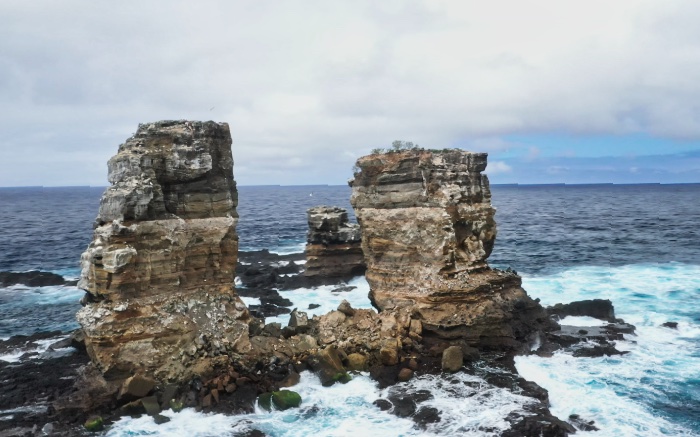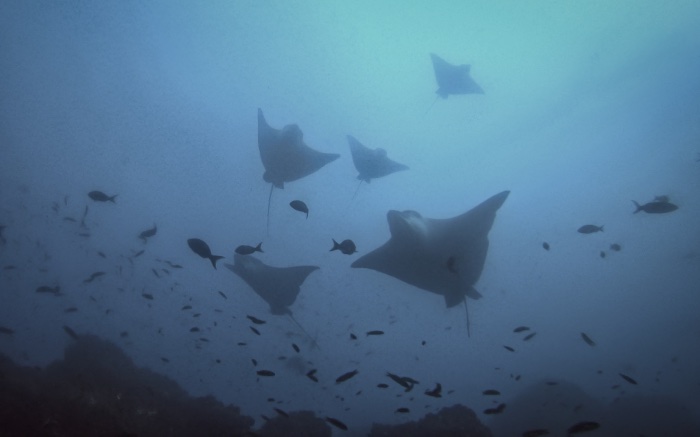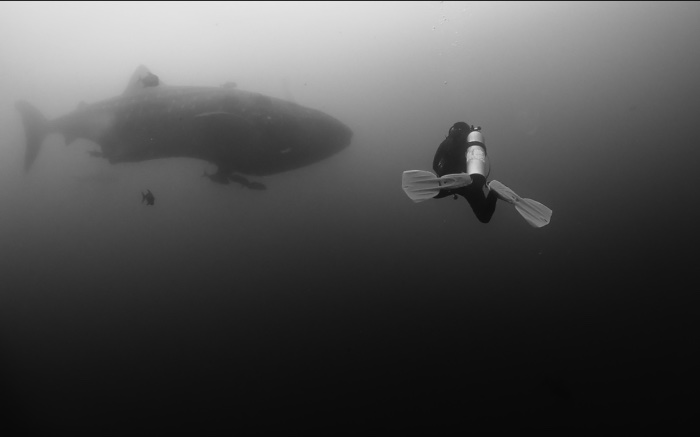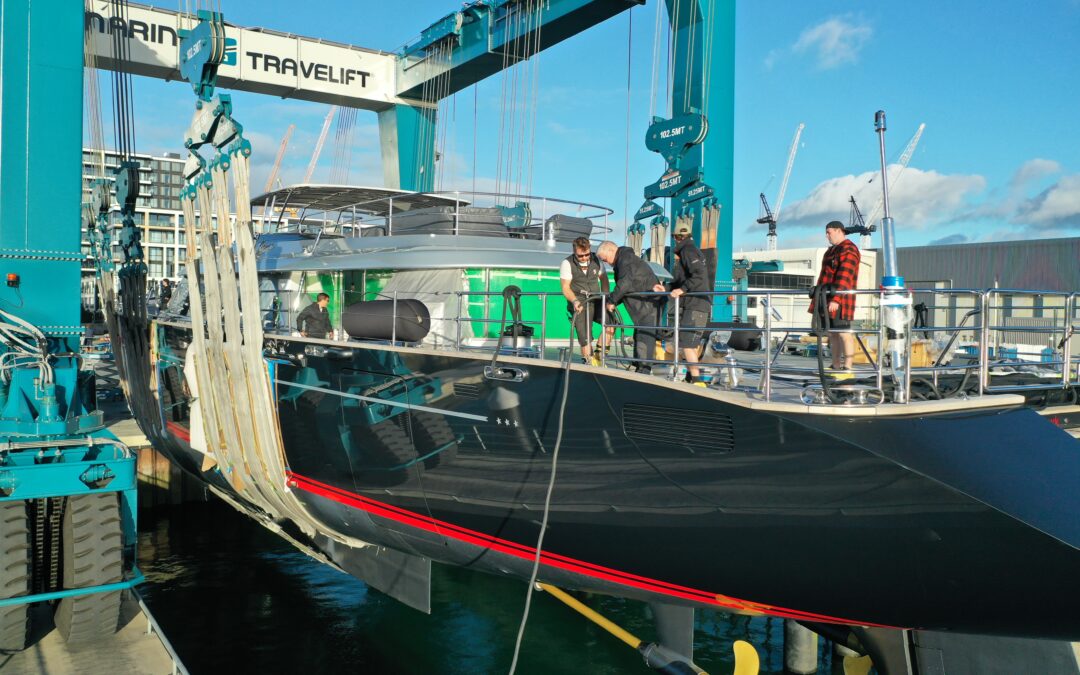
New Zealand, Part III – Seahawk’s Splash in Orams Shipyard
After 11 months in Auckland, Seahawk has finally returned to the water and is on her way to New Caledonia, where she will cruise for the next two months. How lovely it is to finally see those sails up and feel the breeze as we cut through the water’s surface in the Pacific Ocean.
For a good few months of the refit in Orams shipyard, we were in the thick of finding new issues we didn’t plan for. These eventualities often mark a depressing period in any refit for the captain, crew and owners, as the continual stream of obstructive discoveries impacts the workload, cost, and duration of the project. However, we pushed through and found light at the end of the tunnel.
The major tasks were progressing, as the welding to the hull and stern tubes came to an end. Significant progress was being made elsewhere, with the rig components returning from service, and the masts completing the painting process.
On completion of the hull welding, the main hull and superstructure painting could continue, with the make-or-break paint shots on the hull; a huge area to paint, and it required to be as perfect as possible to avoid further delays to our schedule. I’m pleased to say that the Orams paint team achieved this, despite the winter weather in Auckland, resulting in a big sigh of relief from all concerned.
Completing this activity was key to the project flow, as we could start to accelerate toward the major milestones of removing the tent and re-assembling the boat. It IS amazing how quickly things do come together when all the pieces are ready to go. The masts were moved for ‘dressing’ (refitting the rig components), the tent cover came off, and 4 ‘crane days’ resulted in the majority of deck furniture and large fittings being re-attached.
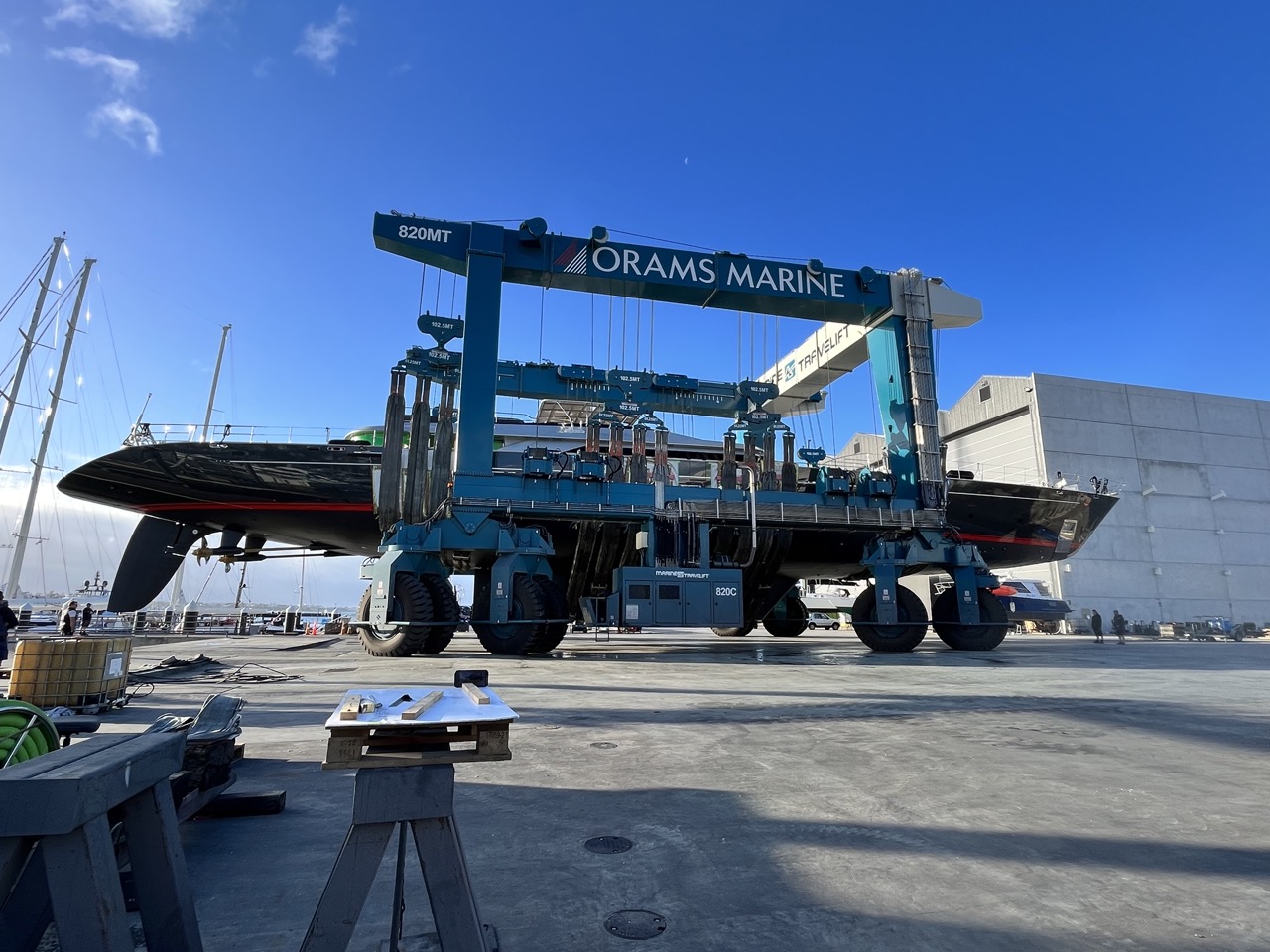
Electrical power was also returned to the boat following the interruption necessitated by the welding work. This was a nerve-racking moment as many will know; re-energising systems after a long shutdown period, especially when so many electronic and computer-based systems are involved, can be highly problematic. We had an added complication, as so much wiring had been disconnected, and many 3-phase motors were removed and re-installed without being able to properly test. So there was a huge scope for issues here.
We got relatively lucky and only had a few issues that were solved with some remote support and the replacement of several system batteries through the boat, but no real show-stoppers. Phew! When we saw green lights on the sail system control PLC, I can assure some of us started to sleep a lot better.
This period is a manic and stressful effort for all concerned, with contractors all trying to squeeze into the same working spaces, crew scurrying around putting things together, and trying to remember where some parts are (it’s common to lose some bits and end up scratching your heads looking for them). Dave White and his rigging team were on a tight schedule too, as they had 2 and a half weeks to rebuild both masts, plus re-attaching all the antennas in readiness for the re-stepping date; a date fixed due to the availability of the crane and associated infrastructure needed. The interior crew gets to see the magnitude of the clean-up task too as protective coverings are removed. While these do prevent a lot of significant damage, there are always areas that need attention and need scheduling around the high activity going on.
However, with all the above taken into account, 3 weeks after completion of the final paint shot, Seahawk was ready to be picked up and put back in the water, and the masts were ready to go back in.
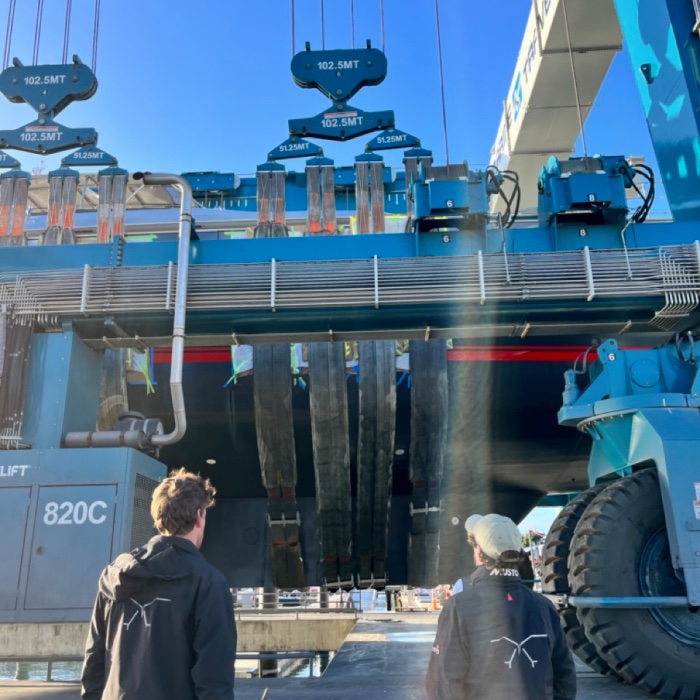
Following those crazy weeks, we finally reached the magic launch day. The original plan had us putting Seahawk back in the water on Monday, June 26th, but the weather was looking like it would have other ideas. With the necessity of a calm day for stepping the rigs immediately following launch, the yard made the call to bring things forward a day; Sunday 25th became D Day, and we were ready!
While lifting a 60m sailing yacht is never a trivial task, lifting one with a brand new paint job requires extra care. The launch becomes more time-consuming than the haul out, owing to the protection needed to prevent damage to the still-curing paint surfaces. The weather gods smiled at us and gave us a dry day ( a rarity in Auckland, regardless of the season). Foam pads and brown paper were applied to the hull in the way of the lifting strops and the machine driven around the boat. Sunday catering consisted of a wonderful fry-up brunch.
At around 14:00, everything was ready and the satisfying moment of knocking out the wooden blocks under the boat could begin. Then it’s time to stand back and watch as the Travelift carries out its manoeuvre to bring the boat over the launch pit. Then it’s the engineers, mechanics and plumbers’ big moment as the boat is lowered in to test the new valves and seals for the first time. Fortunately, aside from one reasonably sizeable leak on testing the fire main (due to a removed pipe section, unbeknown to those on board prior), the boat was watertight and the launch was considered a success (and one day ahead of schedule!)
If you’d like to know more, watch the video below, made by videographer Righardt Van Hyussten on Seahawk’s splash day.
written by Rotational Captain Steve

